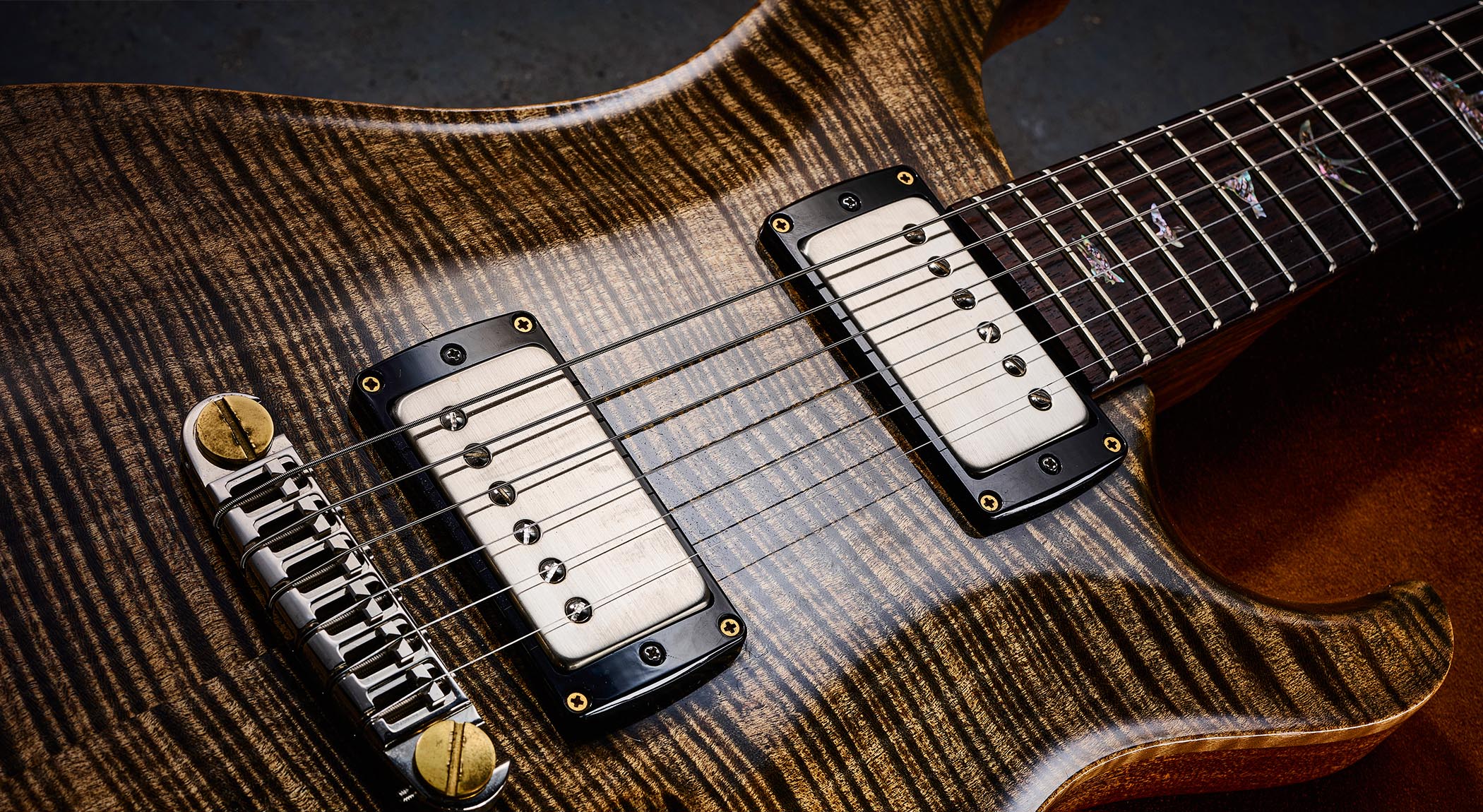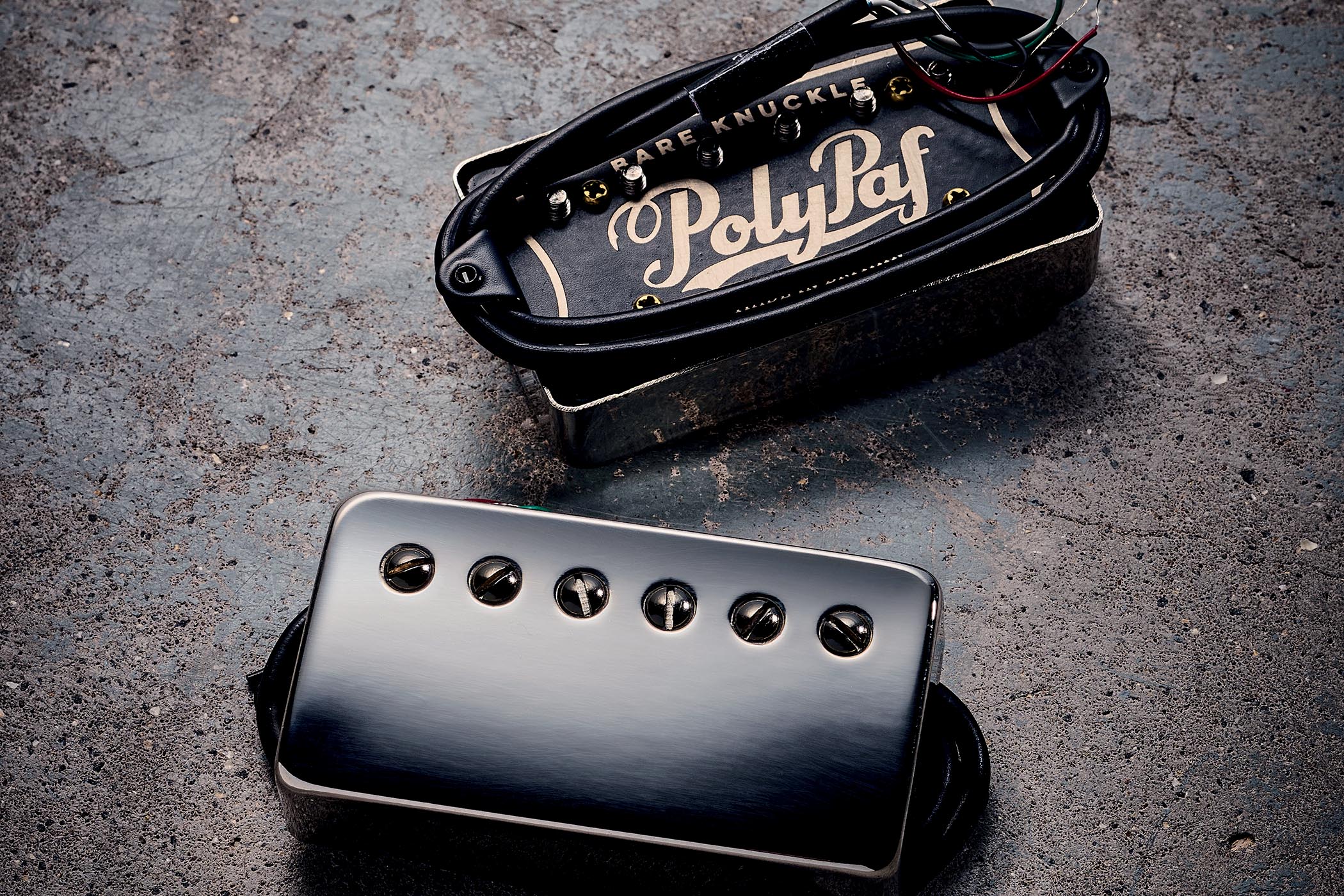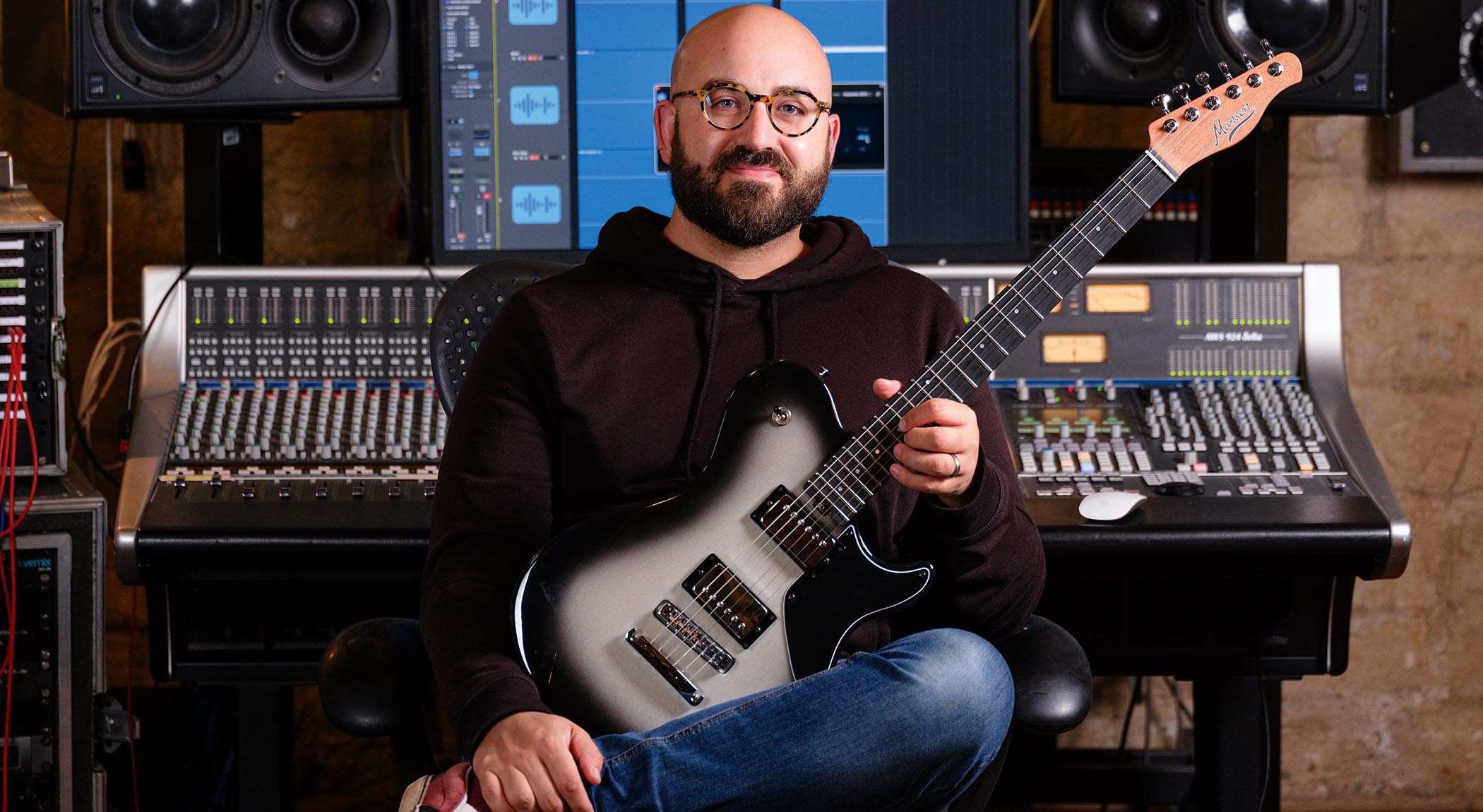Adam ‘Nolly’ Getgood is the guitar world’s man for all seasons. He’s been a member of influential contemporary metal outfit Periphery, an in-demand producer of hard-rock and metal records, and an expert adviser and product developer for Bare Knuckle Pickups.
He has several highly regarded signature humbucker sets to his name – including the recent the PolyPaf set that delivers vintage humbucker tones with a subtle, contemporary twist.
But he is perhaps best known for his ability to craft incredibly chunky, detailed high-gain guitar tones that lack for nothing in definition and edge – yet still have a harmonically rich and full sound.
While it’s tempting to think high gain is all about amps and distortion choices, Adam says the process of getting searing-hot tone that sounds chunky and well defined begins with the player’s fingers.

“For high-gain tones, I’d say that the player and how they’re playing is absolutely critical, even though the amp is distorting the signal so much,” he tells us. “And it’s not about there being a single solution. It’s about matching the player’s technique and intensity with an appropriate gauge of pick and string to generate a signal that doesn’t have too much low-end – and which is generating pleasant overtones for the intensity they’re playing at.
“And even then, you’re probably still going to be reducing low-end by using something like an overdrive pedal, classically a Tube Screamer/Super Overdrive kind of thing – not really for distortion but because they have this naturally very filtered frequency response, eliminating huge amounts of the low-end.
“That’s really critical for palm muting and chugging, which really is the big challenge with high-gain guitar tones: anyone can dial in a really fat, thick, saturated guitar tone for single notes, but what happens when the player palm-mutes? Does it just fall apart? A lot of the time it does.”
Adam ‘Nolly’ Getgood Introduces His Bare Knuckle Signature Humbucker Set: The PolyPaf – YouTube

Watch On
As Adam highlights, while fat low-end may feel empowering, it’s often an enemy to punchy high-gain tone, muddying your sound and slowing down the crisp response to pick attack that fast, articulate playing demands.
Accordingly, Adam adds that the heavily ‘scooped’ sound that people often associate with metal – with treble and bass set high and mids set low – may have arisen from a misconception.
“If you go back to Metallica using those [Mesa/Boogie] Mark IIC+ amps back in the beginning – the tone stack on that amp is before the distortion… [With that amp] you have to cut the midrange with those V-shaped graphic EQ [settings on the front panel of the amp] for it not to sound really boxy and mid-forwards. But I think, just from the visual of that, people started thinking that metal guitar tones needed to have very little midrange to them.
“Actually, that’s not necessarily the case. Especially since the 90s, it’s pretty rare for high-gain guitar tones to have very little in the way of midrange frequencies. All of that distortion flattening out the frequency response requires some mid coverage to sound great.”
The high-output pickup thing was relevant in a time when people were trying to squeeze more gain out of amps that naturally have a huge amount of low-frequency cut
Likewise, the days when a ceramic ’bucker with an output like a power station was de rigueur for metal are probably over, he says.
“I think the high-output pickup thing was relevant in a time when people were trying to squeeze more gain out of amps that naturally have a huge amount of low-frequency cut in the bottom gain, like Marshalls,” Nolly explains. “So you could chuck a very high-output pickup, which naturally is going to have a lot more low frequencies, into that and it doesn’t get out of control.”

Today’s amps, he argues, have abundant bottom-end on tap, so the game is more about controlling low-end and adding in some useful midrange heft.
“You still want to have a pickup that’s got a decent midrange. Some really vintage pickups can be quite hollowed out in that region, so typically you want a pickup that’s in the medium-output range, or a pickup that’s lower output but voiced with a nice prominent midrange, so when you distort it, it doesn’t sound hollow and harsh.
“I think where we’re at now is that high-gain players are mostly using a medium-output pickup or high-gain pickups that have been voiced to have less low‑end, or even lower-gain pickups that are voiced to have more midrange and softer treble.”

“Then you’ve got something like active pickups, which were obviously a huge thing when they came out, and are still used by lots of metal artists who are playing EMGs and Fishmans.
“Those typically have a huge amount of built-in low-cut on them, actually, so they’re very hot, but the low frequency has been filtered out, which immediately makes them sound very tight. But you actually almost can’t use those with players that are too aggressive because they’re already so kind of toppy and they exaggerate that pick attack.”
So far from being a monolithic genre, with a maximal approach to gain, EQ and pickup strength, metal is as nuanced in its way as any bluesman’s tonal palette that’s powered by Patent Applied For pickups and Tweed amps – and understanding this is definitely to your gain.
- “This is no clichéd P.A.F.-repro pickup – it’s completely reinvigorated”: Bare Knuckle PolyPaf humbuckers review
- This article first appeared in Guitarist. Subscribe and save.



